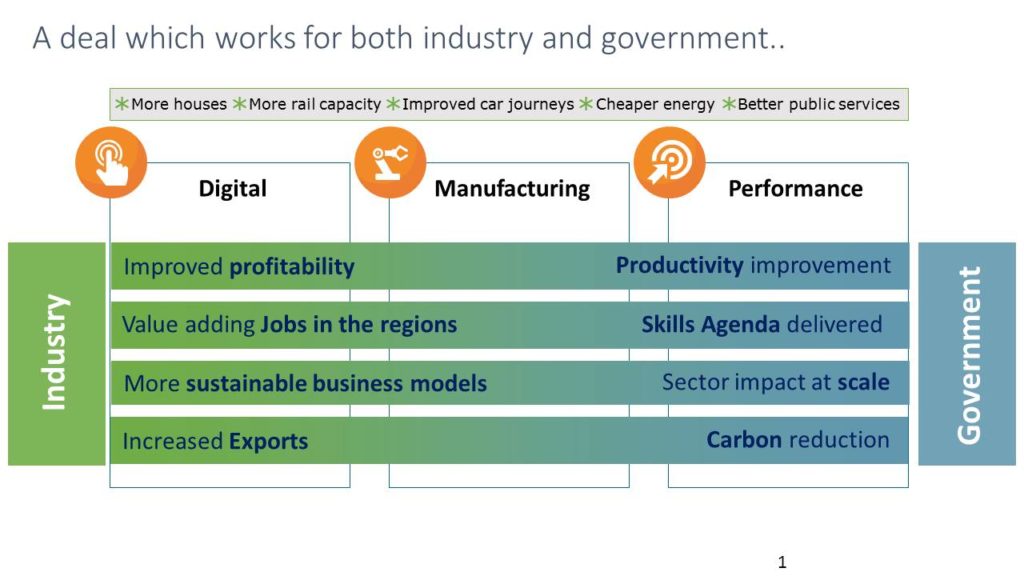
Blog author: Richard Saxon CBE, JCT Chairman
The Construction Leadership Council is an innovation set up by Government in 2016 to provide a successor to the concept of the Chief Construction Adviser and to provide an expert body to guide government in its approach to the industry. The concept was to select a group of chief executives or chairmen from leading firms across the supplier landscape, co-chaired by the construction minister and a major client, Andrew Wolstenholme of Crossrail. Government disdains the bodies set up across the industry to represent sectors as special pleaders and prefers to talk with ‘big fish’. This works well for industries with dominant companies which lead their sector, like automotive and aerospace, but is a stretch in our highly fragmented world. The CLC has no budget to speak of, leaning on the time and support made available by the big fish and their firms. Quarterly meetings and regular changes of minister set a leisurely pace in the first year.
By the end of 2017 however, a broad policy had crystalized, and substantial work was done to enable construction to bid for funds from the Industrial Strategy Challenge Fund announced by government at the start of the year. The Green Paper offered funds to sectors which could offer a clear advantage to the economy and the public purse by implementing changes. It was a competition and not all sectors could win a ‘Sector Deal’ from the Fund. The 2017 budget did however award R&D and training money to CLC, as well as announcing major building commitments.
The essence of the deal made is that Construction will meet the 2025 goals set out in the Industry Strategy of 2013 if government plays its part as a funder and client and industry adopts a set of radical new approaches. Those goals are to cut capital and whole life costs by 33%, and to reduce project time taken, CO2 emissions and the trade gap for construction by 50%. The CLC sees these goals as eminently deliverable, given a move to a strategy for clients and suppliers which is based on a series of powerful ideas.
The industry faces a huge challenge in delivering its known forward programme of infrastructure and housing projects, given its static productivity and falling native labour force. Productivity is at the core of the challenge. We are well behind the economy as a whole in productivity growth and would have been able to deliver £15Bn more construction annually if we were not, equivalent to a Crossrail every year. Productivity must rise by nearly a quarter to fulfil the pipeline programme.
The three key initiatives needed by the industry are:
1. To go digital, delivering more certain outcomes
2. To manufacture more offsite
3. To optimise through-life performance by using smart technology.
These three: Digital, Manufacturing and Performance, all need new skills which must be invested in. That will be one of three key enablers. The others are government and other clients buying for whole-life outcomes, with increased transparency and good payment mechanisms, and industry rolling out standard digital and offsite platforms for everyone to use. Cambridge University and Coventry’s Advanced Manufacturing research Centre will be the focus of work under the Sector Deal. Five major government departments have already committed to a presumption to build offsite by 2019. Digital technology is at the heart of all three initiative areas. It includes making Level 2 BIM business-as-usual, introducing robotic augmentation to human workers to work offsite and on, and transforming building management by using the Internet of Things and Artificial Intelligence. There is a step change potential in performance from this last, as is already being shown by clients like Deloitte and WeWork who are driving up staff wellbeing and productivity and driving down building costs-inuse per capita.
Wolstenholme expresses the future process as one of setting digital protocols, creating digital models and delivering digital assets. Work by McKinsey suggests that the productivity gains for design and construction could arise across all steps in the process and lift productivity 40-60%. Ann Bentley of the CLC set out her part of the picture in the excellent 2017 JCT Povey Lecture, which you can access via: https://corporate.jctltd.co.uk/jct-povey-lecture-2017-hitting-the-sweet-spot-valuefor-clients-delivered-by-valued-suppliers/. Ann focussed on the need to deliver value to clients, expressed in social and environmental terms and in whole-life economics. Judged in this way, lowest-price tendering fails the test by driving out the investment and innovation needed to deliver required value. Clients also need to value their suppliers as well as their assets, forming and keeping relationships. Client capability is a key area for skill building.
The CLC is making a difference, 25 years after the review by the late, great Sir Michael Latham. Let us hope that we can now move more swiftly to re-create our industry on a sustainable basis.

